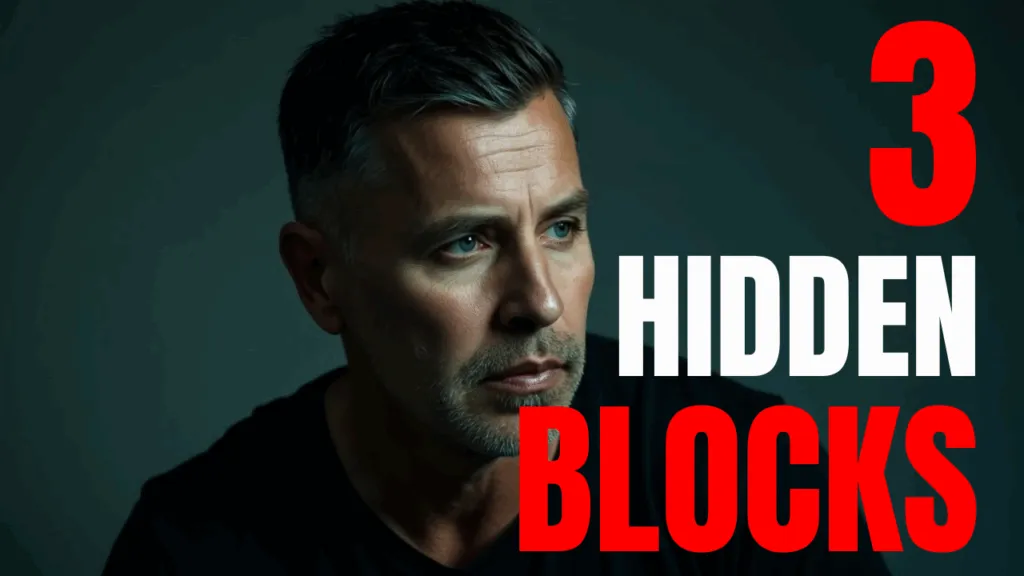
Use the C.L.A.R.I.T.Y. method to transition from just going through the motions to living with intention.
The workday begins as usual.
You sit down. Check Slack. Clear emails.
Knock out tasks. Join a few calls. Smile. Nod. Contribute. Deliver.
It’s fine. You’re fine.
The day ends.
And honestly? You’re already looking forward to the end of the week.
You’re not struggling.
Your performance is solid. The team respects you.
The money’s decent. The title carries weight.
But the spark’s gone.
But the spark’s gone.
The work that used to challenge you now feels like admin.
The goals? Hit them. However, they no longer hold any meaning.
And slowly, your drive has turned into… just going through the motions.
You’ve worked hard to get here — the salary, the seniority, the stability.
And with a mortgage, kids, school fees, and a partner relying on you, it’s no wonder change feels risky.
The weekend comes. You breathe.
You switch off, spend time with the people you love, and enjoy the downtime.
Then Sunday rolls around.
And the quiet dread of Monday creeps back in.
Not because your job is bad.
But because it’s no longer right.
The missing piece? It’s not a new corporate job. It’s not a promotion.
It’s clarity – about what matters to you now.
Because the truth is, your energy has shifted. What fuels you is no longer there. Your values have changed.
But your career hasn’t caught up.
And that mismatch? It’s what creates the burnout, the apathy, the quiet “what’s the point?” whisper in the back of your mind.
The fix isn’t found in a resignation letter.
It starts by reconnecting to what actually drives you – and then designing your next chapter around that.
This guide gives you the step-by-step.
It’s called C.L.A.R.I.T.Y.
A practical way to realign your work with your values – no fluff, no corporate buzzwords.
By the end, you’ll have a clearer picture of what matters, what’s in your way, and how to start rebuilding a career that feels right again.
Step 2 – L: Let Go of Others’ Expectations and Ideals
Here’s something most people don’t want to admit: A lot of what you’re chasing… isn’t actually yours.
At some point, you picked up a picture of what your life should look like.
It might’ve come from your boss.
- Your peers.
- LinkedIn.
- Your parents.
- Or just that invisible pressure to “do the next right thing.”
You didn’t mean to adopt it.
But over time, those expectations sneak in and become the script.
You tell yourself:
- “If I don’t become a Director soon, I’ve fallen behind.”
- “Real success means managing people, building a team, becoming a VP.”
- “I should want more – more scope, more salary, more visibility.”
But here’s the problem: if that path doesn’t match your values, it will slowly wear you down.
Even if you’re good at it.
Because you’re not just pushing toward a goal —
You’re pushing against yourself.
There’s a name for that: misalignment burnout.
It’s not about underperforming.
It’s about living out someone else’s dream.
And your system knows it.
You might still look productive on the outside.
But inside, it’s all drag and no drive.
Take Alex, a senior engineer who followed the path everyone expected:
He stepped into management, climbed the ladder, and got the title.
But every week felt heavier. Every project is less exciting.
The higher he climbed, the more he missed building things.
Why?
Because the goal he was chasing – prestige – wasn’t actually his.
That’s what happens when shadow expectations slip in.
You optimise for approval. Or status. Or keeping up appearances.
And before you know it, you’ve built a life and a career that doesn’t even feel like yours.
You might be chasing something that once mattered to your 30-year-old self — but does it still fit the life you’re living now?
So here’s the move:
Revisit the values list you made earlier.
And ask, “Do I actually care about this? Or was I told I should?”
If the answer is “should,” let it go.
- Let go of the title you don’t want.
- Let go of the path you were told to follow.
- Let go of the pressure to chase someone else’s definition of enough.
You don’t need permission.
You just need honesty.
Because even once you strip away the obvious expectations, there’s often something deeper still driving your choices.
Things that feel automatic. Subtle. Hard to name.
Next, we’re going to shine a light on those hidden drivers — the ones that shape your decisions when you’re not paying attention.
Step 3 – A: Acknowledge Your Shadow Values
You’ve got your values list. You’ve crossed out the ones that weren’t really yours.
Now it’s time to get honest about what’s hiding underneath.
Because there’s a gap between what we say we value… and what we actually chase.
And in that gap, live your shadow values.
Shadow values aren’t evil. They’re just sneaky.
They show up when you’re tired, stressed, stretched thin — or looking for validation.
They’re the fundamental drivers when your actions don’t match your intentions.
Let’s break it down:
- You say you value collaboration. However, in meetings, you often default to a competitive mindset.
- You list courage as a value. But when a challenge hits, you prioritise safety.
- You believe in balance, but you keep saying yes to 70-hour weeks.
That tension? That’s shadow work.
This part of the process can feel uncomfortable — it might even stir up a bit of resistance. That’s normal. It’s not about shame, it’s about building awareness so your next steps are rooted in truth.
It’s not about shame.
It’s about truth.
Aspirational values are what sound good.
Shadow values are what actually run the show when no one’s looking.
They often come from fear:
- Fear of being irrelevant → status
- Fear of being alone → approval
- Fear of uncertainty → control
They also come from unmet needs:
- A desire to be liked.
- To feel important.
- To stay safe.
And when you don’t spot them, they’ll hijack your vision.
You’ll set goals that align with your fears rather than your values.
Example: You claim to value freedom, yet you continue to pursue roles that appear stable.
Why? A shadow value of security is overriding your real goal.
Or maybe you value health but say yes to every boozy networking event.
Shadow value? Belonging.
This stuff is powerful.
Think about it — people will literally smoke their first cigarette, knowing it could kill them.
Why?
- To feel cool.
- To be accepted.
- To belong.
That’s how deep shadow values run.
They’ll override logic.
Even survival instinct.
But once you name them, you can work with them.
You might realise: “I crave recognition.”
Fine. Own it.
Then, build it into your vision in a healthy way — such as finding work where wins are seen and shared, rather than chasing a job title for ego’s sake.
This is the part most people skip.
And it’s why their “big career changes” don’t stick.
They build something new — but based on the same hidden fears.
So don’t skip this. Spend some time here.
Ask:
- Where do my actions clash with my stated values?
- What need am I trying to meet?
- What emotion am I avoiding?
The more honest you are, the clearer your real motivations become.
And the clearer those are, the easier it is to build a vision that actually fits.
Because once you understand what’s driving you — you’re back in the driver’s seat.
Step 4 – R: Reimagine Your Future
Now that you’ve cleared the noise and named what matters, it’s time to build a picture of where you’re headed.
This is your vision — not a wishlist or a five-year plan, but a clear, values-aligned picture of the life and work that would actually feel right.
Begin by discarding the conventional definitions of success.
No job titles. No corporate ladders. No metrics that don’t matter to you.
Ask yourself:
What would fulfilment look like — on your terms?
- For some, it’s solving interesting problems with an innovative team.
- For others, it’s owning their time and working from anywhere.
- It might be leading a mission-driven company.
- Or writing code in silence, with no one to manage but yourself.
Whatever it is, it should match your values — not just your ego.
Maybe what you really want is space, or creativity, or freedom — but financial pressure pulls you back toward what’s “safe” or expected.
That’s not weakness. That’s reality. But when you name it clearly, you can start designing around it — instead of being ruled by it.
A good way to start is with a “future you” story.
Picture a regular workday five years from now.
- Where are you?
- What are you working on?
- Who are you with?
- How do you feel when the day ends?
Don’t just list goals — describe the experience.
- What does the environment look like?
- What’s the pace like?
- What values are present in the work, the people, the flow?
Then, cross-check it with your list.
Each part of your vision should reflect a top value — or at least not clash with one.
That’s what makes it energising, not draining.
You’re designing from the inside out.
Example:
- If your values include creativity and family, your vision may encompass project-based work with a deep focus and flexible hours.
- If your values are leadership and growth, you may envision yourself mentoring rising engineers or launching a niche product that addresses a real-world problem.
Whatever the details, make sure the whole thing feels like you.
You should read it and think: “Yes. That’s me. That’s the life I want to build.”
And don’t forget — just because something looks impressive doesn’t mean it belongs in your vision.
That was Alex’s mistake. He was chasing a CTO title because that’s what people around him respected.
But his actual values? Building things and spending time with his family.
Once he saw that clearly, he reimagined a new path: a tech lead at a mission-driven company with a four-day workweek.
Not flashy. But deeply satisfying.
That’s the point.
When your vision is built around your values, motivation becomes natural.
- You don’t have to force it.
- You want to move toward it.
So take the time to write it down. Not for LinkedIn. Not for your CV. For you.
You’re creating your own North Star.
And when it’s aligned — even if it changes over time — you’ll always have something solid to steer by.
Step 5 – I: ImaginAction
You’ve built a vision that feels like you. Now, it’s time to make your brain believe it.
That’s what ImaginAction is for — turning your vision into something that feels real before it actually is.
It’s not wishful thinking. It’s how the brain works.
When you vividly imagine doing something — with sights, sounds, feelings — your brain starts wiring as if you’re already doing it.
That means you can mentally rehearse success.
And that rehearsal builds belief.
Here’s how:
- Find a quiet space.
- Close your eyes.
- Picture that ideal workday you mapped out in Step 4.
Don’t just see it — step into it.
- What’s the environment like?
- What do you hear?
- How do you feel in your body? Calm? Energised? Proud?
If one of your values is freedom, imagine closing your laptop at noon and heading out to explore a new city.
If it’s mastery, picture solving a complex problem and getting genuine appreciation for it.
Feel it. Own it. Let it sink in.
Then, put it in the present tense:
- “I’m doing work that challenges me, and I feel sharp, alive, and focused.”
- “I’m walking my child to school on a Tuesday, and I feel grateful for this rhythm.”
Your brain doesn’t know the difference between imagination and memory — but it does believe in repetition.
So if you run this inner movie often enough, your brain starts saying: “This is familiar. This is safe. Let’s move toward it.”
That’s one benefit — confidence.
The second? You start spotting paths that lead you there.
- You’ll notice connections you used to miss.
- You’ll recall people, courses, or ideas that were right under your nose.
- You’ll find yourself nudging conversations in that direction.
Not because you’re forcing it — but because your brain is now filtering for what matters.
It’s like setting your internal GPS.
And don’t stop at imagination. Add a tiny action.
Right after visualising, do something that moves the needle.
- Send that message.
- Book the call.
- Sketch the idea.
- Save the job ad.
- Write the first paragraph.
It doesn’t need to be big.
It just needs to be real.
Because the moment you take action that lines up with your imagined future, you’re showing your brain:
“This isn’t just a dream. We’ve already started.”
Step 6 – T: Take Small Steps and Make It Tangible
It’s one thing to imagine the future. It’s another to walk toward it.
This is where momentum starts — not with a big leap, but with small, deliberate steps.
Life and career changes feel massive when you look at the whole thing.
That’s why you don’t take on the mountain.
You take on the next step. A low-risk, low-stakes move that fits into your life as it is right now.
You don’t need to leap. You just need to shift 5% this week in the right direction.
Start by asking:
What’s one action I can take this week that moves me closer?
Not someday. Not next quarter. This week.
- Reach out to someone in the role you want.
- Block time for that course or project.
- Rewrite your LinkedIn summary to reflect your new direction.
- Say no to something that drains you — and yes to something that doesn’t.
Each one is a vote for the future you’re choosing.
And don’t just be busy — be aligned.
Pick steps that match your values.
- If your top value is learning, register for a course.
- If it’s freedom, experiment with a side project that gives you more control.
- If it’s connection, reach out to others who care about the same things.
Even in the early stages, these steps feel good.
Not because they’re big. But because they’re true.
You’ll feel a shift almost immediately — because you’re finally moving in a direction that fits.
Let’s check back in on Alex.
Remember, he was burning out in a job that appeared to be a good fit on paper.
His first move wasn’t quitting. It was building a quick prototype for a product idea he cared about. That one step did two things:
It highlighted his innovative value and gave him a story to tell when he began exploring new roles.
- Then came coffee chats.
- Then came saving.
- Then came options.
It didn’t happen all at once.
But every small step builds proof — this path is real.
To stay motivated, track your progress. Use a doc, a journal, a whiteboard — whatever works.
Write down what you tried, what worked, what didn’t, and what you learned.
And yes — celebrate wins.
- Finished a course? High five.
- Sent a scary email? Good on you.
- Finally, blocked time for yourself? That counts, too.
Small wins train your brain to say, ‘This is working.’ And when things don’t go to plan (and they won’t, sometimes), don’t panic.
Tweak the approach. Keep the vision.
Because clarity isn’t a one-time moment — it’s something you return to.
Step 7 – Y: Say “Yes” to Your Vision
This is the final step — but it’s also the one you’ll repeat the most.
“Yes” isn’t just a one-time moment.
It’s the quiet decision you make again and again. To back yourself. To stay aligned. To keep going, even when the path gets messy.
You’ve done the work:
- You’ve clarified what matters.
- You’ve let go of the noise.
- You’ve looked honestly at what drives you.
- You’ve imagined something better — and taken real steps toward it.
Now comes the part where you own it.
Saying yes means giving yourself permission to live the life that actually fits you.
- Not the one that looks best on paper.
- Not the one that pleases your past self.
- The one that feels true right now.
It might mean:
- Speaking up about changing your role
- Saying no to a promotion that doesn’t align
- Starting that project, you’ve been shelving for years
Whatever it is — every choice that honours your values is a yes to yourself.
It also means keeping your “why” in sight. Your values — like freedom, creativity, or contribution — are more than words.
They’re anchors. Use them.
Some people write theirs on a Post-it near their desks. Others reflect weekly.
The method doesn’t matter — but the reminder does. Because distraction will come.
- So will comparison.
- So will shiny offers that don’t serve the future you’ve chosen.
And when they do, you’ll pause and ask:
“Does this serve my values — or someone else’s?”
That’s clarity in action.
Also — stay flexible. Clarity doesn’t mean rigidity. You’ll grow. Life will shift. New values might emerge. That’s okay.
When that happens, come back here. Rerun the steps. Update your vision. Adjust the plan.
But stay true to what matters. That’s what makes this sustainable. It’s a grounded way of working and living — with purpose baked in.
And just quietly — look at how far you’ve come. Not long ago, things felt flat. Now, you’ve got a compass, a direction, and a set of tools to keep you on track.
You’ve stepped out of autopilot and taken the wheel.
You’ve earned this.
Wrap-Up: Put C.L.A.R.I.T.Y. to Work
You’ve now got the complete C.L.A.R.I.T.Y. framework. A way to move from burnout to alignment. From drifting to deciding.
Let’s recap what each step gave you:
- C – Clarify what matters to you, not just what looks good on paper
- L – Let Go of the “shoulds” and expectations that don’t belong to you
- A – Acknowledge the shadow values that have been quietly driving your choices
- R – Reimagine a future that fits — on your terms, not someone else’s
- I – ImaginAction helps your mind believe it’s real, so you start to act like it is
- T – Take Small Steps that align with your values and build momentum fast
- Y – Say “Yes” to what’s right for you, again and again
This isn’t just a process — it’s a shift. You’ve moved from chasing to choosing from autopilot to intention.
- You don’t need to burn everything down.
- You just need to keep coming back to what matters.
Clarity is what gives your career a backbone. It helps you say no faster, yes smarter, and move forward with more energy than you’ve felt in years.
Mid-life and mid-career aren’t the end. It’s the part where you get to bring all of your experience to the table — and finally aim it in a direction that feels like yours.
You’ve earned the right to stop surviving — and start building something that truly fits who you’ve become.
Ready to Take the Next Step?
If this framework resonated with you — and you’re ready to put it into practice — join the next Rewire Your Mindset FREE Masterclass.
You’ll learn the 4 essential steps to take back control of your:
- Career direction
- Income potential
- Day-to-day energy and life balance
Whether you’re mid-life, mid-career, mid-pivot, or just feeling stuck, this session will help you move from survival mode to intentional progress — fast.
References
- Brown, B. (2012) Daring Greatly: How the Courage to Be Vulnerable Transforms the Way We Live, Love, Parent, and Lead. London: Penguin.
- Demartini, J.F. (2009) The Values Factor: The Secret to Creating an Inspired and Fulfilling Life. New York: Hay House.
- Gabor Maté (2022) The Myth of Normal: Trauma, Illness & Healing in a Toxic Culture. London: Penguin Random House.
- Harvey, B.J. (n.d.) ImaginAction Process. Authentic Education. Available at: https://www.authenticeducation.com.au (Accessed: 25 May 2025).
- Kegan, R. and Lahey, L.L. (2009) Immunity to Change: How to Overcome It and Unlock the Potential in Yourself and Your Organization. Boston: Harvard Business Press.
- Pink, D.H. (2009) Drive: The Surprising Truth About What Motivates Us. New York: Riverhead Books.
- Robinson, K. (2009) The Element: How Finding Your Passion Changes Everything. London: Penguin.
- Ryan, R.M. and Deci, E.L. (2000) ‘Self-determination theory and the facilitation of intrinsic motivation, social development, and well-being’, American Psychologist, 55(1), pp. 68–78. https://doi.org/10.1037/0003-066X.55.1.68
- Sinek, S. (2009) Start with Why: How Great Leaders Inspire Everyone to Take Action. New York: Portfolio.
- Waldinger, R.J. and Schulz, M.S. (2023) The Good Life: Lessons from the World’s Longest Scientific Study of Happiness. London: Simon & Schuster.






